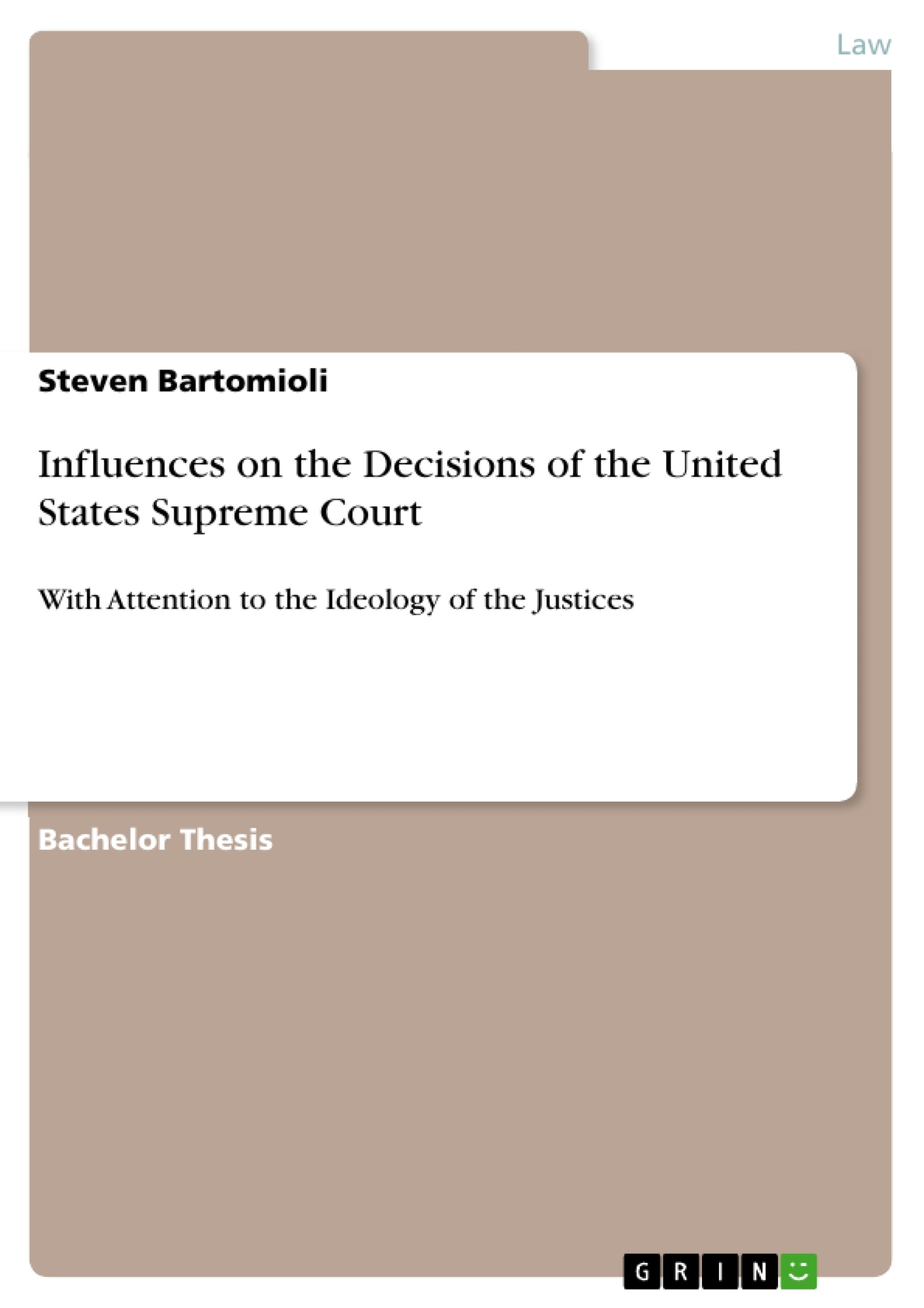What influences the way the Supreme Court decides a disposition of a case? Using data the Supreme Court Compendium ranging from 1946 to 2009 and varying sources of literature in the field, I developed several hypotheses: (1) On an individual level an increase overtime of the justices’ liberality; (2) the Supreme Court is influenced by public opinion directly or indirectly via Congress; (3) justices will offer opinions consistent with the ideals of their nominating President; and (4) the justices will formulate opinions consistent with that of the Chief Justice. Upon conclusion of my scholarly research and combination of data tables I found that there is a trend of ideology shifting from conservative towards more liberalism. Based upon the influence of the public on Congress I develop a new type of model I appropriately call the Legislative Model; the justices are policy driven. The president tries to nominate individuals with his ideology which shows through, however this can often be trumped by the influence of the Chief Justice on the ideology of individual justices. Based upon the research done for this paper, we can better understand what drives the opinions of the Supreme Court, directly and indirectly.
Inhaltsverzeichnis (Table of Contents)
- Abstract
- Introduction
- Literature Review
- Article 1
- Article 2
- Article 3
- Methodology
- Findings
- Discussion
- Conclusion
Zielsetzung und Themenschwerpunkte (Objectives and Key Themes)
This paper aims to examine the factors influencing the decisions of the United States Supreme Court, with a focus on the ideological leanings of the justices. It utilizes data from the Supreme Court Compendium from 1946 to 2009 to identify trends in decision-making patterns. The paper seeks to determine whether justices become more liberal over time, and explore the extent to which the Court is influenced by public opinion, the ideology of the nominating president, and the influence of the Chief Justice.
- Ideological shifts of Supreme Court justices
- Influence of public opinion on Supreme Court decisions
- Impact of presidential nominations on judicial ideology
- Role of the Chief Justice in shaping judicial opinions
- Relationship between ideology and decision-making processes within the Supreme Court
Zusammenfassung der Kapitel (Chapter Summaries)
The abstract introduces the research question and outlines the hypotheses being investigated. The introduction provides context, outlining the scope of the study, the data sources, and the specific focus on ideological trends and their potential influences. The literature review presents a critical analysis of existing scholarly work on judicial ideology and polarization, exploring how these concepts impact decision-making within the Supreme Court.
The methodology section delves into the research methods employed, including data collection, analysis techniques, and the specific frameworks used to assess ideological shifts. The findings chapter presents the results of the data analysis, highlighting significant trends and patterns related to the hypotheses.
The discussion section critically analyzes the findings, relating them to existing theories and literature. It explores the implications of the results, drawing connections between the observed trends and the broader context of the Supreme Court's role in the American political system.
Schlüsselwörter (Keywords)
This research paper centers around the themes of judicial ideology, Supreme Court decision-making, public opinion, presidential nominations, Chief Justice influence, and the impact of ideological polarization on judicial outputs. The study examines how these factors intersect to shape the Supreme Court's decisions, providing insights into the complexities of the judicial process and the evolving role of the Court in American society.
- Quote paper
- Steven Bartomioli (Author), 2014, Influences on the Decisions of the United States Supreme Court, Munich, GRIN Verlag, https://www.grin.com/document/293063



